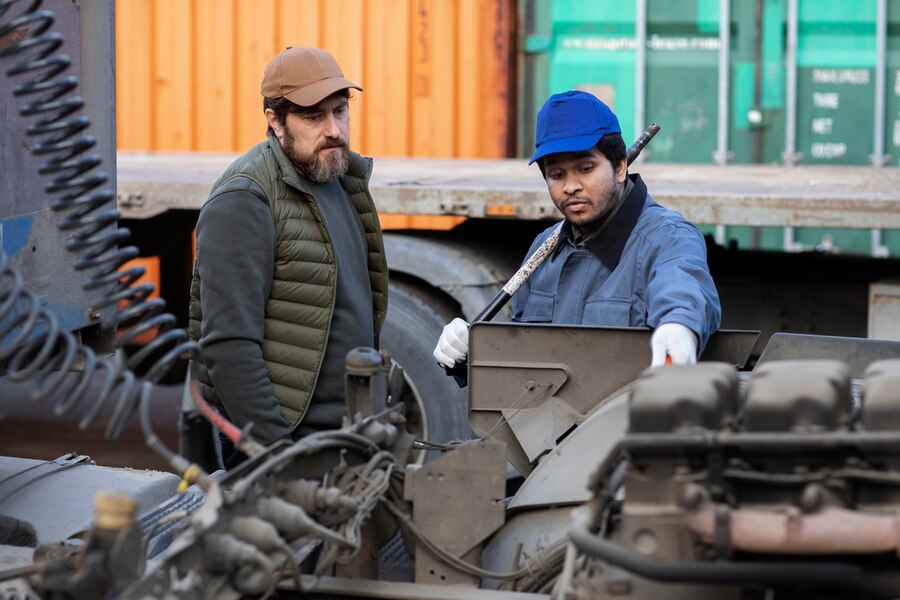Australia’s industrial landscape is vast and varied, with countless motors powering industries from mining and manufacturing to agriculture and transportation. These motors are the backbone of many operations, and their reliability is crucial to ensuring continuous productivity. One critical component within these motors, especially in machines that require the transfer of electrical signals or power between stationary and rotating parts, is the slip ring. However, slip ring failures can pose significant challenges, leading to downtime, costly repairs, and even safety risks. This blog will explore the nature of slip ring failures, their impact on Australia’s industrial motors, and how to mitigate these issues.
Understanding Slip Rings and Their Role in Industrial Motors
Slip rings are electrical devices used to transmit power and signals from a stationary part to a rotating component in machinery. They are essential in systems where continuous rotation is required, such as wind turbines, cranes, and large industrial motors. Slip rings enable the transmission of electricity and data without interrupting the rotating motion of the machine.
In Australia’s industrial sector, slip rings are found in various applications, including mining equipment, conveyor systems, and heavy-duty motors used in manufacturing. The efficiency and reliability of these motors depend heavily on the proper functioning of the slip rings. When a slip ring fails, it can lead to significant operational disruptions, making it a critical issue that requires attention.
Common Causes of Slip Ring Failures
Slip ring failures can occur due to various factors, often related to wear and tear, environmental conditions, or improper maintenance. Understanding these causes is key to preventing failures and ensuring the longevity of industrial motors.
- Wear and Tear: Over time, the brushes and contact surfaces within slip rings experience wear due to constant friction. This wear can lead to poor electrical contact, resulting in inconsistent performance or complete failure. Regular maintenance and timely replacement of worn components are essential to prevent this type of failure.
- Contamination and Debris: Industrial environments can be harsh, with dust, dirt, and other contaminants posing a risk to slip rings. If debris enters the slip ring assembly, it can cause abrasion, overheating, or even short circuits. Proper sealing and regular cleaning can help mitigate the risks associated with contamination.
- Misalignment: Misalignment between the rotor and the stator in a motor can cause uneven wear on the slip rings, leading to premature failure. This issue is often a result of improper installation or inadequate maintenance. Ensuring precise alignment during installation and conducting regular inspections can help prevent misalignment-related failures.
- Electrical Overload: Slip rings are designed to handle specific electrical loads. If a motor is subjected to an electrical load that exceeds the slip ring’s capacity, it can cause overheating and eventual failure. This is particularly important in Australia, where industrial motors are often used in demanding applications. Monitoring electrical loads and ensuring they remain within the slip ring’s specifications is crucial.
- Environmental Factors: Australia’s diverse climate can also play a role in slip ring failures. Extreme temperatures, humidity, and exposure to corrosive elements can accelerate the degradation of slip rings. In regions with harsh environmental conditions, using slip rings made from materials designed to withstand these challenges can reduce the likelihood of failure.
The Impact of Slip Ring Failures on Australia’s Industries
Slip ring failures can have a profound impact on industrial operations, leading to both direct and indirect consequences. The most immediate effect is the downtime caused by the failure. When a critical motor fails, the entire production line may need to be halted, resulting in lost productivity and revenue.
In addition to downtime, slip ring failures can lead to costly repairs or even the need for complete motor replacement. This not only incurs expenses but also requires significant time to procure and install new components, further extending the downtime.
Moreover, slip ring failures can pose safety risks. In certain industries, such as mining or heavy manufacturing, the failure of a critical motor can lead to hazardous situations, endangering workers and equipment. Therefore, addressing slip ring failures promptly is not just a matter of maintaining productivity but also ensuring the safety of personnel.
Preventative Measures to Avoid Slip Ring Failures
Preventing slip ring failures requires a proactive approach that includes regular maintenance, monitoring, and the use of high-quality components. Here are some steps that can be taken to minimize the risk of slip ring failures:
- Regular Inspections and Maintenance: Conducting regular inspections of slip rings and their associated components is crucial. This includes checking for signs of wear, contamination, misalignment, and overheating. Regular maintenance, such as cleaning and replacing worn parts, can extend the life of slip rings and prevent unexpected failures.
- Monitoring Electrical Loads: Ensuring that the electrical loads on the slip rings are within the specified limits is essential. Overloading the slip rings can cause overheating and rapid wear. Monitoring systems can be used to track electrical loads and alert operators if they exceed safe levels.
- Environmental Protection: In environments with harsh conditions, additional protective measures may be necessary. This could include using slip rings with enhanced sealing to prevent contamination, or selecting materials that are resistant to corrosion and extreme temperatures. Protecting slip rings from environmental factors can significantly reduce the likelihood of failure.
- Training and Awareness: Ensuring that maintenance personnel are well-trained and aware of the importance of slip rings in industrial motors is also critical. Proper training can help technicians identify early signs of failure and take corrective actions before a minor issue becomes a major problem.
Conclusion
Slip ring failures are a critical issue for Australia’s industrial motors, with the potential to cause significant operational disruptions, costly repairs, and safety risks. By understanding the common causes of slip ring failures and implementing preventative measures, industries can reduce the likelihood of these failures and ensure the reliability of their motors.
Regular maintenance, monitoring, and the use of quality components are key strategies in preventing slip ring failures. By taking a proactive approach, industries can protect their investments, maintain productivity, and ensure the safety of their operations. As the backbone of many industrial processes, ensuring the proper functioning of slip rings is essential to the success and sustainability of Australia’s industries.





